Enabling Technology for Good with TechSoup
How We Built a Comprehensive Digital Assessment Tool for Nonprofits Through In-Depth UX & Tech Discovery, and Inclusive Design

Project Scope
To build a Digital Assessment Tool for Non-profit Organizations to Improve their Digital Capabilities.
Scale
1744+ Organizations, 1944+ Teammates.
Inception:
Duration:
Current Status:
Project ongoing, 3 phases completed, 100% client satisfaction.
Team:
1 Engineering Manager
1 Principal Designer
1 Product Manager
1 Tech leader
2 Full Stack Designers
3 Developers
1 Quality Analyst
Introduction
How It All Started
The nonprofit sector has its own share of stumbling blocks – tight budgets, low resources, and hiring challenges – to name a few. As a result, technology adoption has been a perennial struggle for nonprofit organizations. Taking this in stride, TechSoup was founded in 1987 to equip impact-focused changemakers with transformative technology solutions and skills that they need to improve lives globally and locally. Headquartered in San Francisco, it has partnered with over 1.5 million nonprofit organizations across a wide range of sectors like education, health, women’s empowerment, and child protection.
Their recent innovation is a one-of-a-kind Digital Assessment Platform that helps nonprofit leaders to achieve the following.
- Accurately evaluate the current state of their technology adoption, and
- Identify the next best steps to reach their technology goals for overall organizational success.
To bring their vision into reality, they partnered with Digicorp to conceptualize, develop, and design the Digital Assessment Platform, keeping in mind the unique challenges and requirements of the nonprofit sector globally.
Problem Identification and UX Research
Right at the outset, it emerged during our in-depth discussions with the TechSoup team that the User Experience (UX) of the platform would have to be as inclusive, intuitive, and easy to navigate as possible. This was especially important since the target user groups for the platform were highly diverse and scattered across the globe.
During the Discovery Phase which lasted for more than a month, we spent long hours identifying the specific user needs and brainstorming the UX requirements to address those needs. These were further refined, researched, and translated into UX features in the Software Requirements Specification (SRS) phase that lasted for around 4 months.
The key UX requirements that we arrived at, based on our extensive UX research are as follows.
| User Needs/Challenges/Problems | UX Requirements Identified by Digicorp |
| Lack of tech literacy and general discomfort with using online assessment platforms. | The platform should be extremely easy to use with a very basic interface and navigation system. |
| Lack of time and resources to spend on using the platform. | The assessment format should be crisp and to the point. The content should be divided into modular sections to be quickly grasped by the users. |
| Differences in language, familiarity with various terminology, and general diversity in communication protocols across the world. | The platform content needs to be available in multiple translations to account for geographical and language barriers. It needs to be tested for user understanding and seamless communication to all users. |
| Critical challenges faced by the differently-abled in reading, understanding, and using the platform. | Adopting an inclusive approach to the design such that users have the option to read, hear, or visualize the platform content and respond with textual, visual, or audio input. |
| Lack of adequate internet bandwidth and IT infrastructure, especially in remote, interior regions in various parts of the world. | Enabling offline, on-premise availability of the platform along with the primary cloud version, ensuring the necessary data architecture, seamless caching, and allowing for auto-syncing when internet bandwidth is available. |
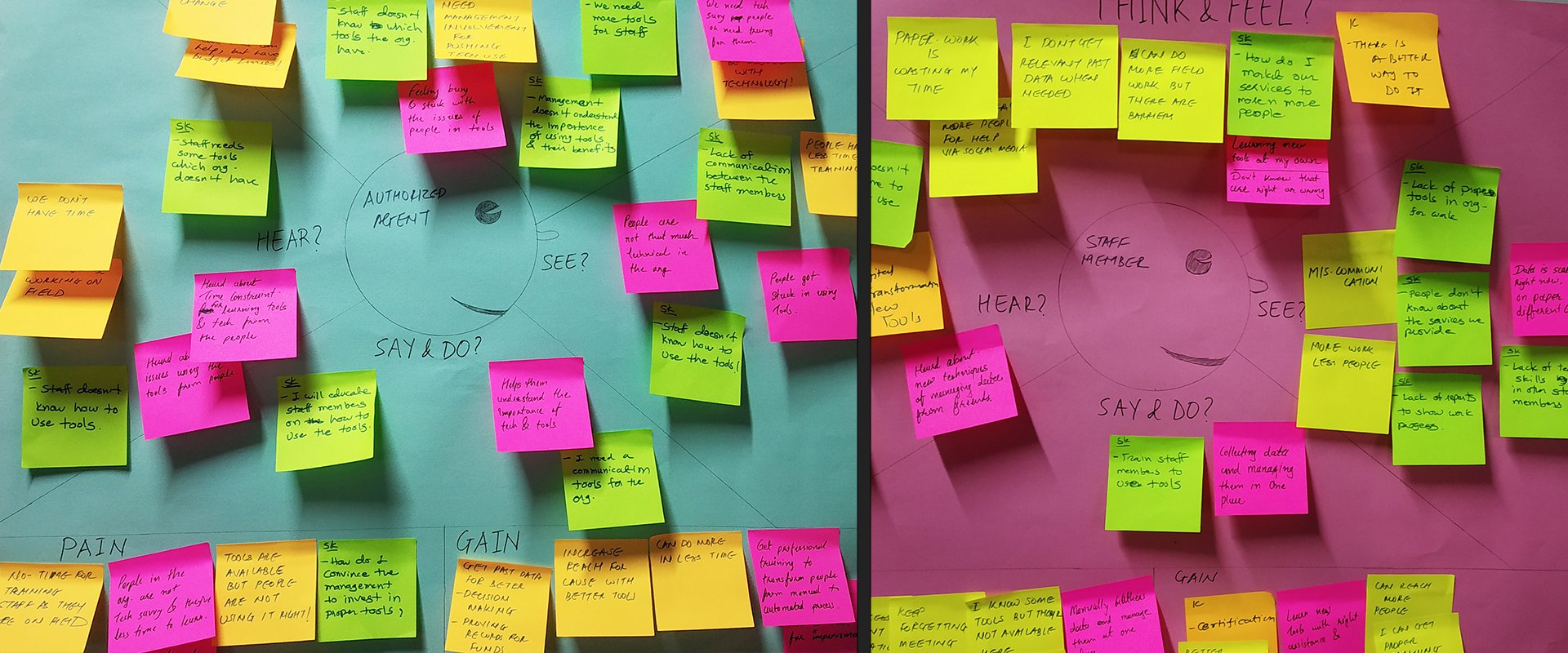
Conceptualizing the Structure of the Digital Assessment Platform
Key Challenges
For TechSoup, it was extremely important to make the Digital Assessment Platform as comprehensive and all-encompassing as possible. Missing out on key details and elements can lead to inaccurate assessment, and hence, lead to unsuitable recommendations. This is also crucial since users are only interacting with the platform and not with an actual tech consultant to walk them through the steps. Hence, the platform needed to be self-explanatory and completely self-service in nature.
Our Approach
To mitigate the above challenges, we designed the platform in a way such that no critical details are left out, and yet, the user does not feel overwhelmed. The key components of the platform developed by Digicorp are the following.
Goal Mapping
Understanding the mission, vision, strategic goals, and technology goals of the nonprofit.
Focus Areas
Identifying the challenges faced by the nonprofit in key areas like operations, program management, program delivery, fundraising, marketing, digital security, hardware and infrastructure, partnership and collaborations, and so on.
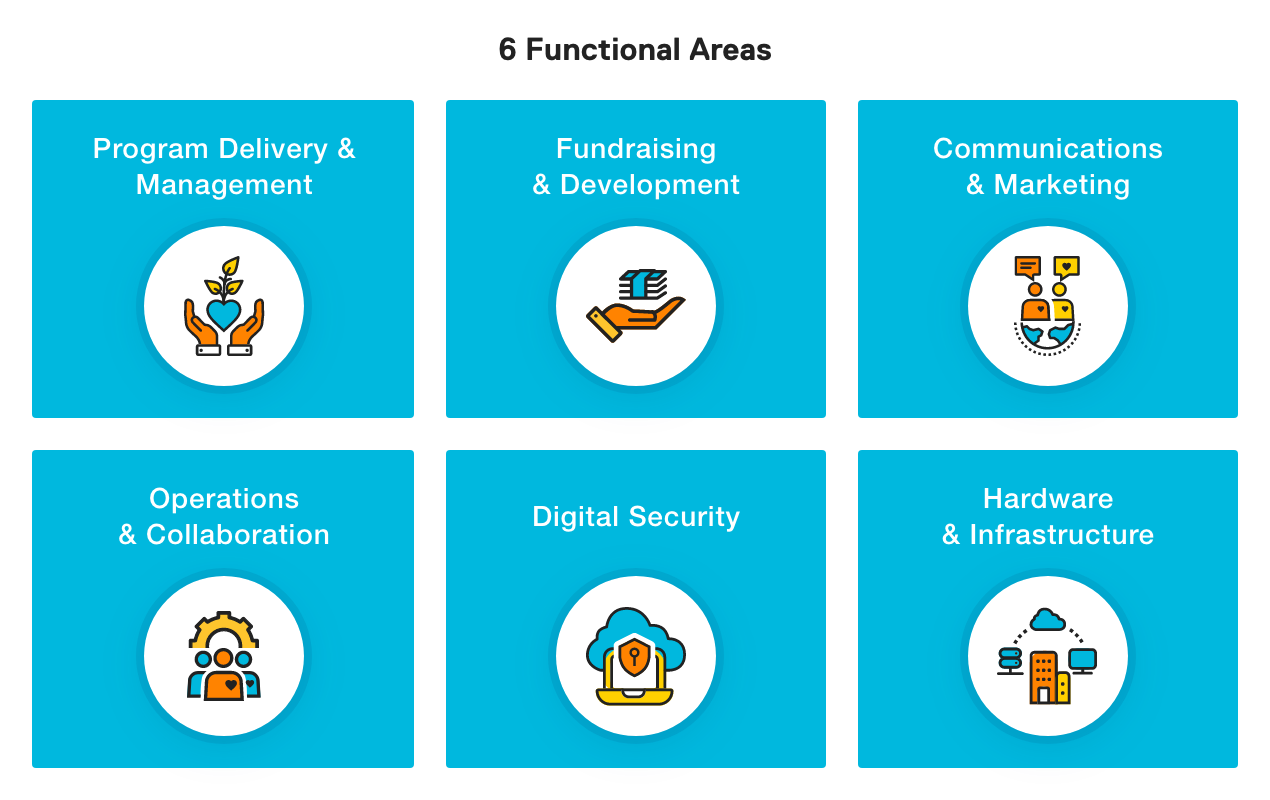
Assessment and Rating
Based on the responses provided by the user, the platform automatically ranks and rates the nonprofit and classifies it into one of the five stages of technical capability, that is:
- Adhoc – Unplanned, unstructured, and scattered technology adoption.
- Functional – Technology adoption is based on basic functional requirements – no organization-wide implementation.
- Standardized – Organization-wide use of standardized tech resources and tools based on an underlying plan and structure.
- Optimized – Implementation of technology is customized and optimized to the needs of the organization, yielding better outcomes and improved productivity.
- Adaptive – The organization is able to adapt to its technology needs on the go in an agile and flexible manner, leading to the maximum ROI on its tech investment.
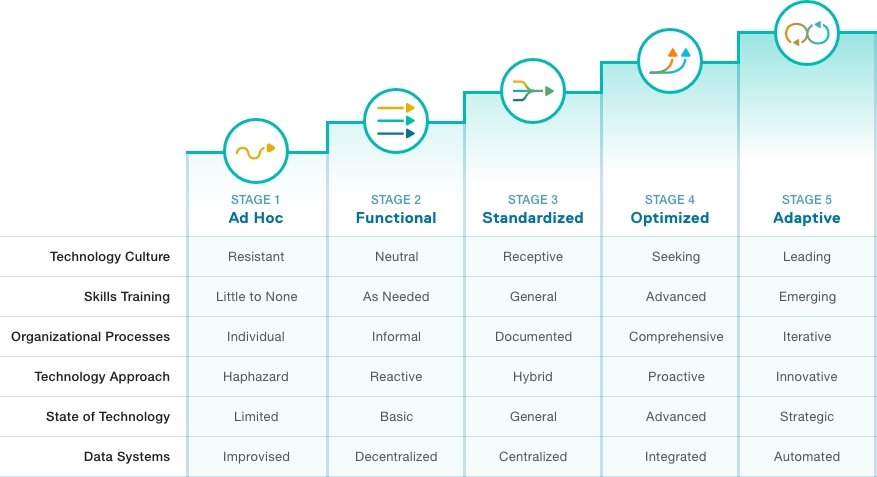
Resource Recommendations
Helping the nonprofit to reach its tech goals and overall organizational vision and mission by recommending various resources like IT services, hardware and software support, online courses, tech-based content like reports and literature, technology policy-making, webinars, and one-to-one time with TechSoup consultants, if required.

Our Hands-on Approach to Deep User Research
As mentioned earlier, getting the UX architecture right was a key priority for the success of this project. Understanding users and creating accurate user personas and UX flows were extremely critical for the later stages of product development to unfold.
Face-to-face Interviews with Diverse User Groups
80-85% of TechSoup’s nonprofit partners belong to the small-and-medium-size category. However, that doesn’t mean that we could bucket them all into one homogenous user group. We spent a significant amount of time on in-depth one-to-one interviews to get a granular picture of the entire spectrum of users.
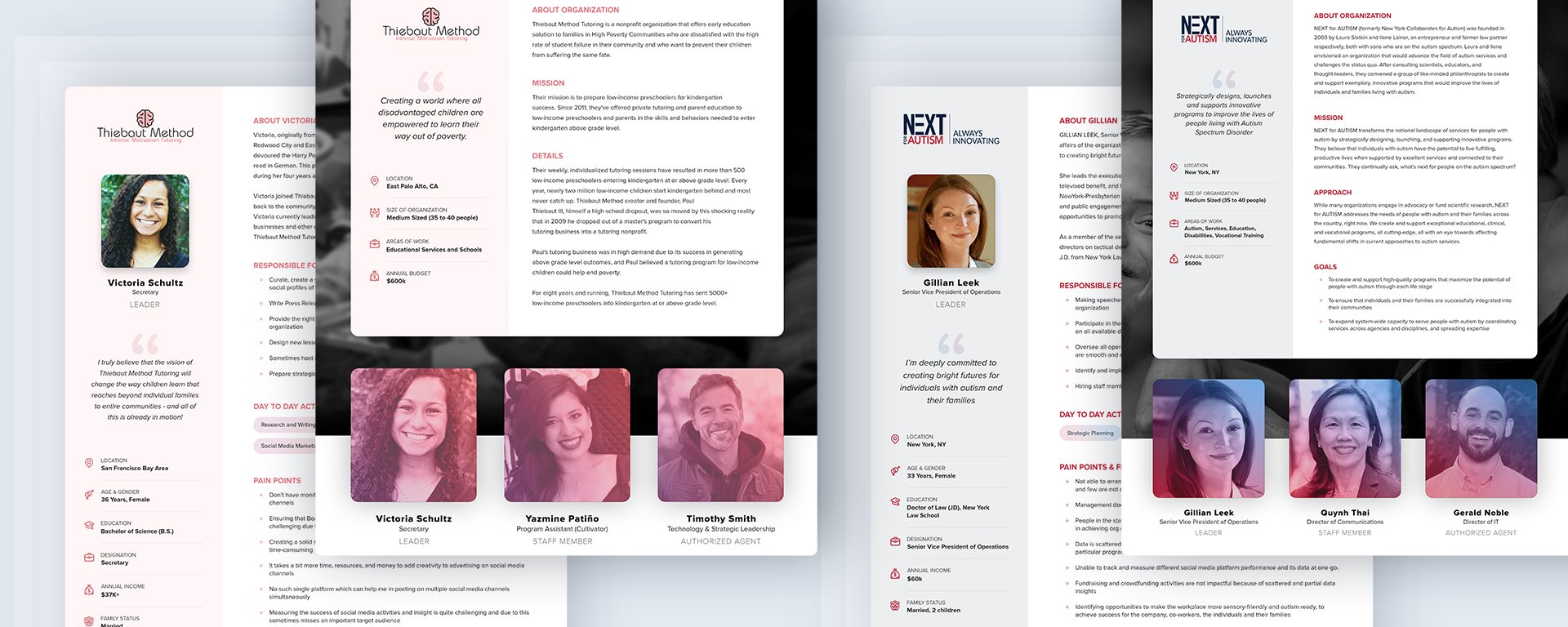
Multi-level Testing and Refining the Language
Paying minute attention to detail was not limited to the research phase alone.
Whether it was creating a wireframe, generating a mock-up, or inserting the content, we went back to our test group of users every time to ensure that we are on the right track. Even though the TechSoup team had hired a copywriter for the platform content, we worked closely with the writer to refine the language for better understandability, keeping in mind the grasping ability of the users to consume and digest tech-based content.
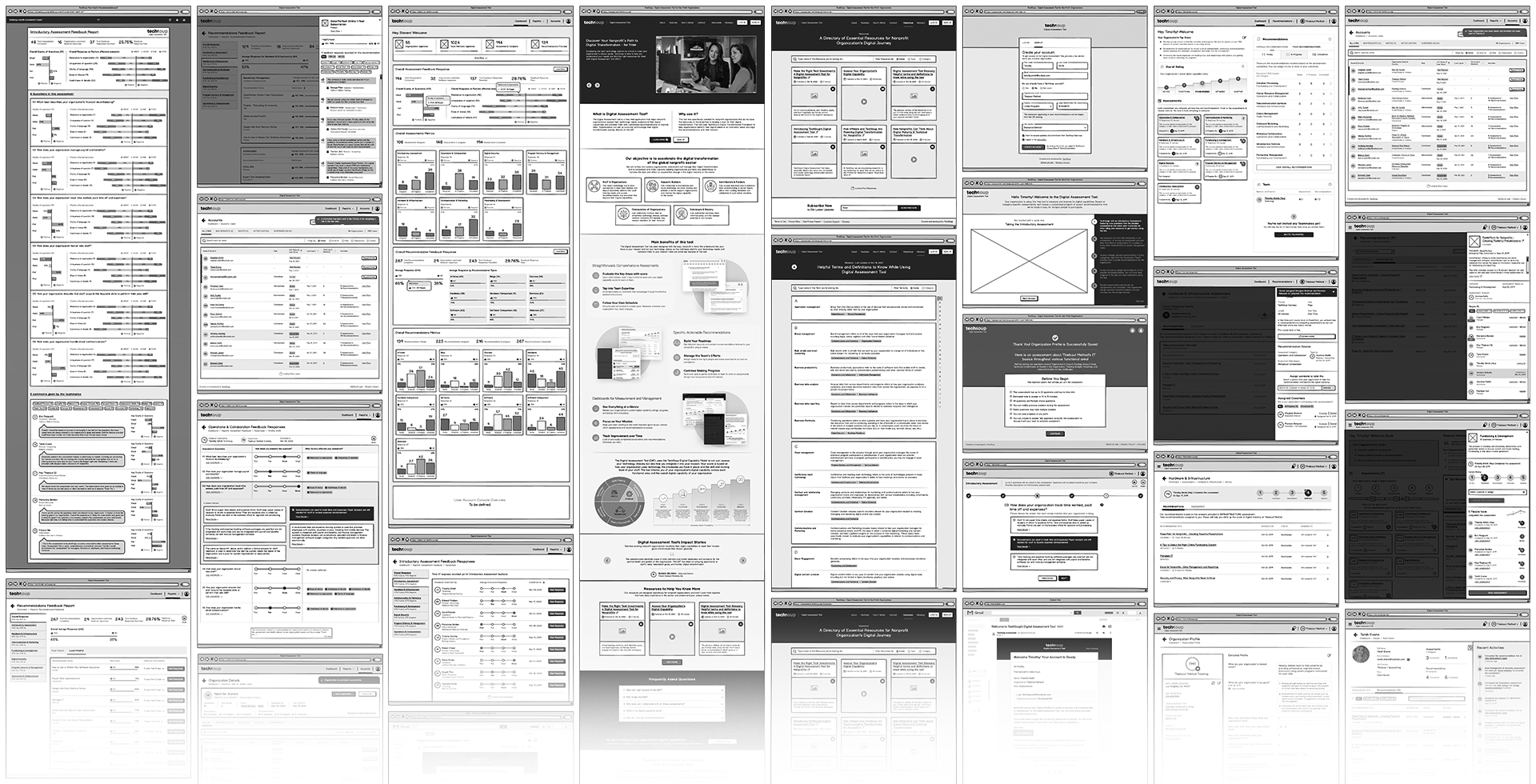
Highly Dynamic and Iterative Development
The layout, flow, and duration of the platform content changed significantly across the different phases of delivering multiple deliverables to the client. Our team made sure that every suggestion from the client and from the end-users was factored into the design.
Even while developing and finalizing the product, research was constantly taking place in the background, and the outcomes of the research were being simultaneously incorporated into the platform design. Making the platform user-ready for a global audience was no cakewalk, but Digicorp’s hands-on and systematic approach helped to minimize the time taken and cost incurred while ensuring maximum alignment with the users’ needs.
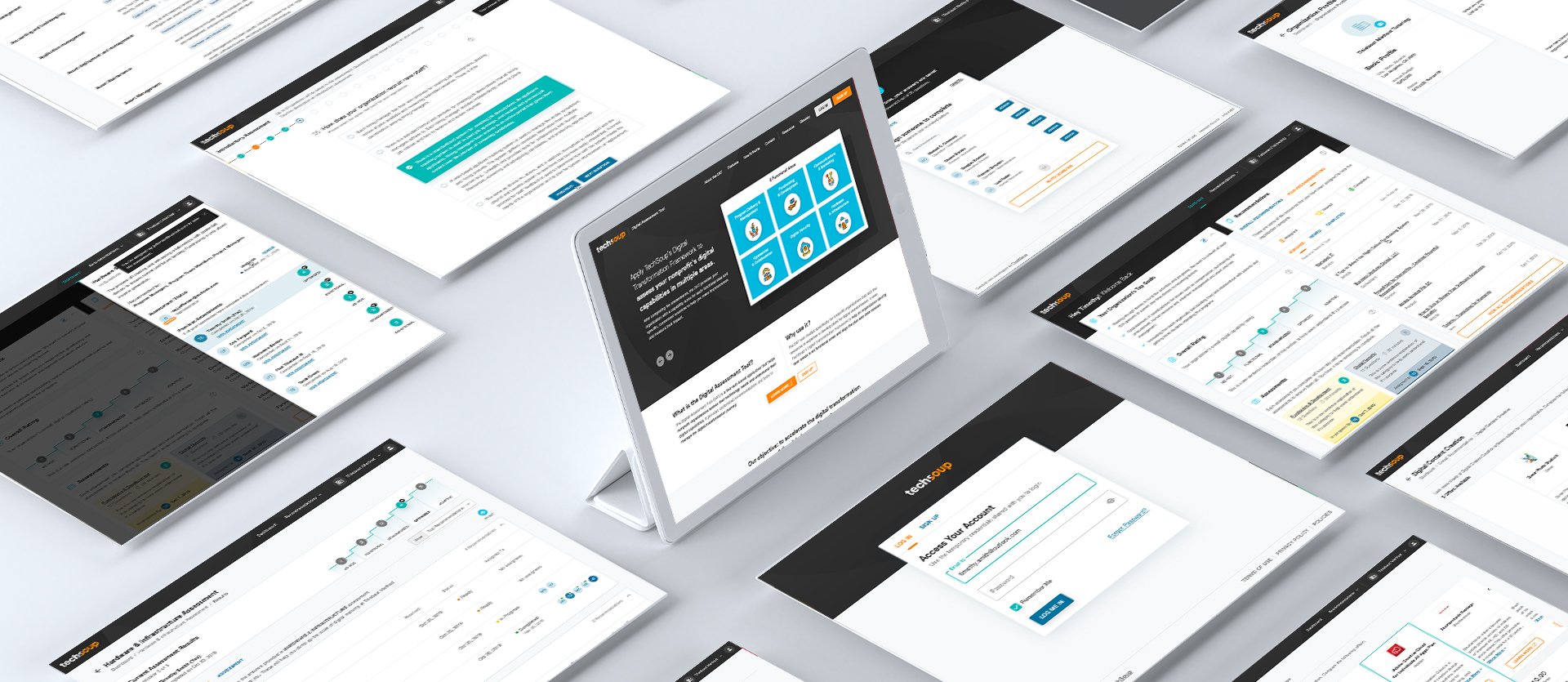
Technical Discovery
Apart from the UX Discovery, we also did extensive and detailed discovery and research for the platform infrastructure and architecture. We conducted an extensive technical discovery process along with the client for about a month to understand the business requirements and propose solutions.
We visited the client in San Francisco and performed a detailed brainstorming to capture their technical limitations and requirements. During our discovery, we found that the tool needs to interact with their existing internal systems to fetch/store important information to avoid duplication and redundancy of data. We discussed the possible solutions with the client’s internal teams to understand how this can be worked out in a seamless manner and based on their inputs and our research, we designed the tech specifications of the final solution.
Technical Specifications Underlying the UX Process
Although the user needs were central to our process, various technological considerations and assumptions also came into play. These included aspects like:
- Rolling out the platform in multilingual environments & multiple Locales
- Google Tag Manager and Google Analytics
- Security
- Maintainability
- Performance
- Usability
- Scalability
- Caching
- Data Portability
- Identity Access Management & SAML
- AWS CI/CD
- Accessibility Standards
- Mobile Optimized UI
- Accelerated Mobile Pages

Beyond Design and Development: Marketing Support for the Platform
At Digicorp, we pay special attention to the post-launch phase as well where many organizations struggle with spreading the word and popularizing their product or platform. In the case of TechSoup’s Digital Assessment Tool, for example, we devised a strategy for marketing the platform to maximize its reach and usage.
To operationalize the strategy, our creative team designed the visual language for the promotion of the platform and created numerous marketing graphics that were used by TechSoup team in their promotional tools like blog posts, email campaigns, white papers, and other marketing collateral. This helped to create awareness around the platform among nonprofit organizations across 36 countries. We also invested time and resources in mobilizing the various target audiences to visit the platform and undergo the assessment. Since we already had extensive and in-depth UX research in place which greatly aided us in connecting with the various user groups, we were able to help the TechSoup team in streamlining their marketing activities and overall promotion of the platform.
Want to build a product or a website that engages with your target audience and maximizes your impact? Need a trusted, reliable, and competent team of designers, developers, and engineers who truly understand how UI-UX works? Contact us today to get started on your journey!